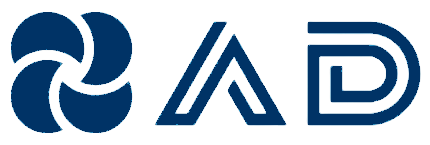Suggestions based on the Question and Answer that you are currently viewing
Imagine you had to determine whether a particular period of inflation was demand pull, or cost push, or a combination of the two. What information would you require in order to conduct your analysis?
Kobestrongly dislikes SUVs and is appalled that so many are on the road. He proposes to eliminate the federal income tax and replace it with a $50,000 annual tax per SUV. Based on the number of SUVs currently owned in the United States, he estimates the tax will generate exactly the amount of tax revenue currently collected from the income tax. What is wrong with Kobe’s proposal? What type of forecasting is Kobelikely using?
Santo Design Agency was founded by Thomas Grant in January 2008. Presented below is the adjusted trial balance as of December 31, 2014. Instructions (a) Prepare an income statement and a statement of retained earnings for the year ending December 31, 2014, and an unclassified balance sheet at December 31. (b) Answer the following questions. (1) If the note has been outstanding 6 months, what is the annual interest rate on that note? (2) If the company paid $17,500 in salaries in 2014, what was the balance in Salaries and Wages Payable on December 31, 2013?
What factors must be considered in determining whether or not to record a liability for pending litigation?For threatened litigation?
In a given economy, the supply of money is £10 billion; the velocity of circulation of money (spent on final goods and services) is 3; and the price index is 2.00. (a) What is the level of real national income? (b) How much have prices risen (in percentage terms) since the base year? (c) Assume that money supply increases by 10 per cent and that the velocity of circulation remains constant. What will be the rate of inflation if (i) there is no increase in real national income; (ii) real national income increases by 10 per cent; (iii) real national income increases by 5 per cent?
If price regulation results in lower profits, will this always imply lower investment? How might a government incentivise innovation in a regulated industry?
Cost function judgement and methodology Suppose you have the responsibility of creating a cost function for the costs of an Internet service provider’s help line. Required (a) What is the cost object? Identify where you might obtain information about past costs for the cost object. (b) Identify at least two potential cost drivers. Explain where you might obtain information about past volumes for each cost driver. (c) What other information would you like to obtain before estimating the cost function? How might you obtain that information? (d) Identify the techniques introduced in this chapter that you would be most likely to use in creating the cost function. Explain why.
Theory If the segmented markets theory causes an upward-sloping yield curve, what does this imply? If markets are not completely segmented, should we dismiss the segmented markets theory as even a partial explanation for the term structure of interest rates? Explain. (LO3)
Explain how the value-at-risk (VaR) method can be used to determine whether a bank has adequate capital. (LO3)
Is it possible for the government to target the money supply over the longer term without targeting the level of public-sector net borrowing?
In each of the following independent cases, indicate the amount (1) deductible for AGI, (2) deductible from AGI, and (3) neither deductible for nor deductible from AGI before considering income limitations or the standard deduction.
Suppose the hole in Problem 26.10 were to be cut using EDM rather than ECM. Using a discharge current = 20 amps (which would be typical for EDM), how long would it take to cut the hole? From Table 4.1, the melting temperature of iron is 2802°F.
Wasserman Corporation issued 10-year bonds on January 1, 2014. Costs associated with the bond issuance were $160,000. Wasserman uses the straight-line method to amortize bond issue costs. Prepare the December 31, 2014, entry to record 2014 bond issue cost amortization.
The stockholders’ equity accounts of G.K. Chesterton Company have the following balances on December 31, 2014. Common stock, $10 par, 300,000 shares issued and outstanding $3,000,000 Paid-in capital in excess of par—common stock 1,200,000 Retained earnings 5,600,000 Shares of G.K. Chesterton Company stock are currently selling on the Midwest Stock Exchange at $37. Instructions Prepare the appropriate journal entries for each of the following cases. (a) A stock dividend of 5% is declared and issued. (b) A stock dividend of 100% is declared and issued. (c) A 2-for-1 stock split is declared and issued.
What do you understand by the policy ineffectiveness proposition? On what assumptions is the proposition based?
In a turning operation on ductile steel, it is desired to obtain an actual surface roughness of 63 µ-in with a 2/64 in nose radius tool. The ideal roughness is given by Eq. (24.1) and an adjustment will have to be made using Figure 24.2 to convert the 63 µ-in actual roughness to an ideal roughness, taking into account the material and cutting speed. Disposable inserts are used at a cost of $1.75 per cutting edge (each insert costs $7.00 and there are four edges per insert). Average time to change each insert = 1.0 min. The workpiece length = 30.0 in and its diameter = 3.5 in. The machine and operator’s rate = $39.00 per hour including applicable overheads. The Taylor tool life equation for this tool and work combination is given by: vT0.23 f 0.55 = 40.75, where T = tool life, min; v = cutting speed, ft/min; and f = feed, in/rev. Solve for (a) the feed in in/rev that will achieve the desired actual finish, (b) cutting speed for minimum cost per piece at the feed determined in (a). Hint: To solve (a) and (b) requires an iterative computational procedure. Use of a spreadsheet calculator is recommended for this iterative procedure
Anderson Nuclear Power Plant will be “mothballed” at the end of its useful life (approximately 20 years) at great expense. The expense recognition principle requires that expenses be matched to revenue. Accountants Ana Alicia and Ed Bradley argue whether it is better to allocate the expense of mothballing over the next 20 years or ignore it until mothballing occurs. Instructions Answer the following questions. (a) What stakeholders should be considered? (b) What ethical issue, if any, underlies the dispute? (c) What alternatives should be considered? (d) Assess the consequences of the alternatives. (e) What decision would you recommend?
Ames Quartet Inc. factors receivables with a carrying amount of $200,000 to Joffrey Company for $160,000 on a with recourse basis. Instructions The recourse provision has a fair value of $1,000. This transaction should be recorded as a sale. Prepare the appropriate journal entry to record this transaction on the books of Ames Quartet Inc.
When you made the decision to study economics, was it a ‘rational’ decision (albeit based on the limited information you had available at the time)? What additional information would you like to have had in order to ensure that your decision was the right one?
Amy Dyken, controller at Fitzgerald Pharmaceutical Industries, a public company, is currently preparing the calculation for basic and diluted earnings per share and the related disclosure for Fitzgerald’s financial statements. Below is selected financial information for the fiscal year ended June 30, 2014. The following transactions have also occurred at Fitzgerald. 1. Options were granted on July 1, 2013, to purchase 200,000 shares at $15 per share. Although no options were exercised during fiscal year 2014, the average price per common share during fiscal year 2014 was $20 per share. 2. Each bond was issued at face value. The 8% convertible bonds will convert into common stock at 50 shares per $1,000 bond. The bonds are exercisable after 5 years and were issued in fiscal year 2013. 3. The preferred stock was issued in 2013. 4. There are no preferred dividends in arrears; however, preferred dividends were not declared in fiscal year 2014. 5. The 1,000,000 shares of common stock were outstanding for the entire 2014 fiscal year. 6. Net income for fiscal year 2014 was $1,500,000, and the average income tax rate is 40%. Instructions For the fiscal year ended June 30, 2014, calculate the following for Fitzgerald Pharmaceutical Industries. (a) Basic earnings per share. (b) Diluted earnings per share.
What is the predominant alloying element in all of the stainless steels?
What factors should be considered when choosing allocation bases?
In what way may short-term demand-management policies help to stabilise the economy? What problems occur in the use of such policies?
: Compare the ideal, rational model of decision making to the political model of decision making.
“A worksheet is a permanent accounting record, and its use is required in the accounting cycle.” Do you agree? Explain.
The benefits of buying with AnswerDone:

Access to High-Quality Documents
Our platform features a wide range of meticulously curated documents, from solved assignments and research papers to detailed study guides. Each document is reviewed to ensure it meets our high standards, giving you access to reliable and high-quality resources.

Easy and Secure Transactions
We prioritize your security. Our platform uses advanced encryption technology to protect your personal and financial information. Buying with AnswerDone means you can make transactions with confidence, knowing that your data is secure

Instant Access
Once you make a purchase, you’ll have immediate access to your documents. No waiting periods or delays—just instant delivery of the resources you need to succeed.
